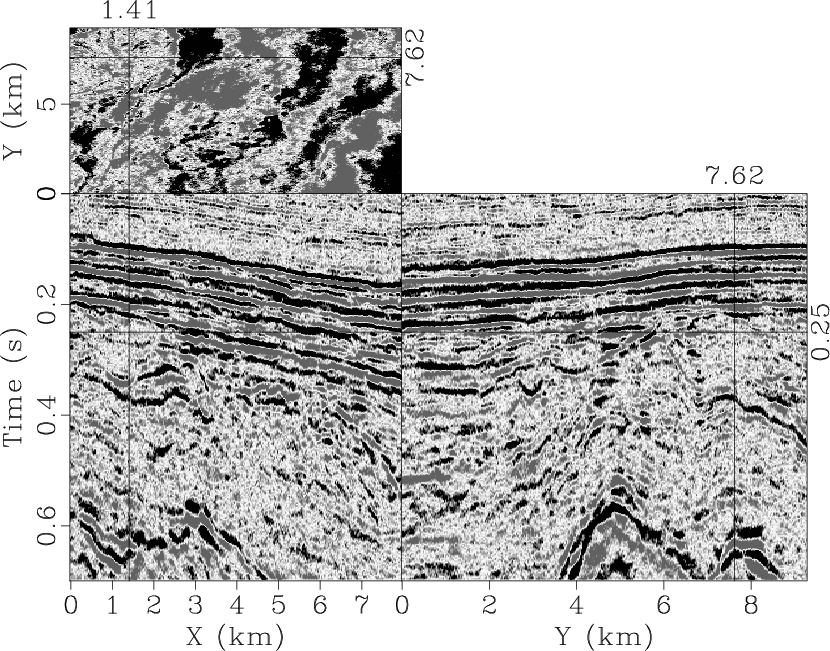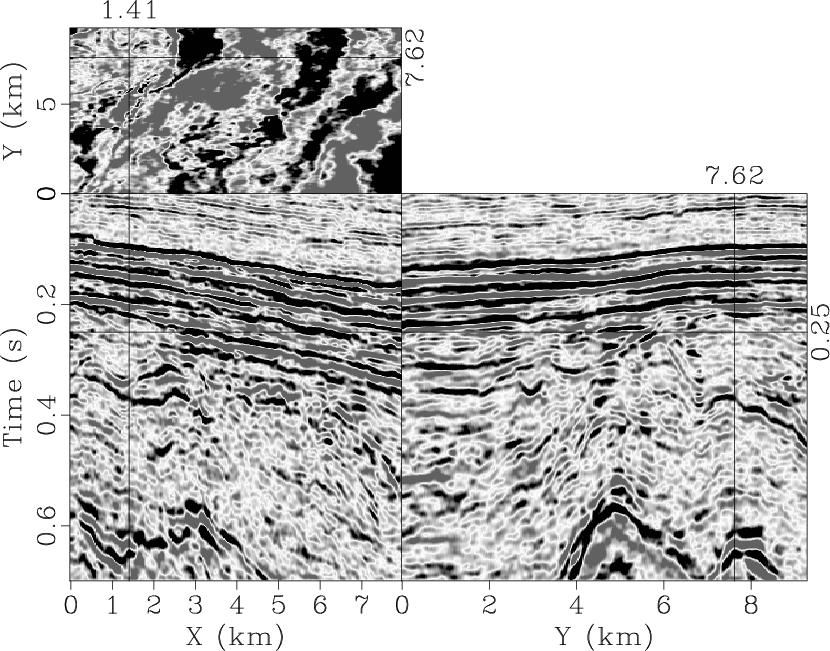A new paper is added to the collection of reproducible documents: Noniterative f-x-y streaming prediction filtering for random noise attenuation on seismic data


Random noise is unavoidable in seismic exploration, especially under complex-surface conditions and in deep-exploration environments. The current problems in random noise attenuation include preserving the nonstationary characteristics of the signal and reducing computational cost of broadband, wide-azimuth, and high-density data acquisition. To obtain high-quality images, traditional prediction filters (PFs) have proved effective for random noise attenuation, but these methods typically assume that the signal is stationary. Most nonstationary PFs use an iterative strategy to calculate the coefficients, which leads to high computational costs. In this study, we extended the streaming prediction theory to the frequency domain and proposed the f-x-y streaming prediction filter (SPF) to attenuate random noise. Instead of using the iterative optimization algorithm, we formulated a constraint least-squares problem to calculate the SPF and derived an analytical solution to this problem. The multi-dimensional streaming constraints are used to increase the accuracy of the SPF. We also modified the recursive algorithm to update the SPF with the snaky processing path, which takes full advantage of the streaming structure to improve the effectiveness of the SPF in high dimensions. In comparison with 2D f-x SPF and 3D f-x-y regularized nonstationary autoregression (RNA), we tested the practicality of the proposed method in attenuating random noise. Numerical experiments show that the 3D f-x-y SPF is suitable for large-scale seismic data with the advantages of low computational cost, reasonable nonstationary signal protection, and effective random noise attenuation.





